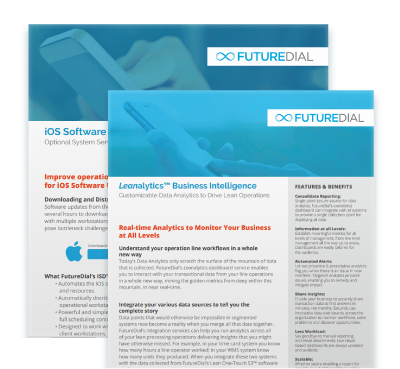The FutureDial Blog
(3.04.2024)
Accurate Grading, Bigger Profits
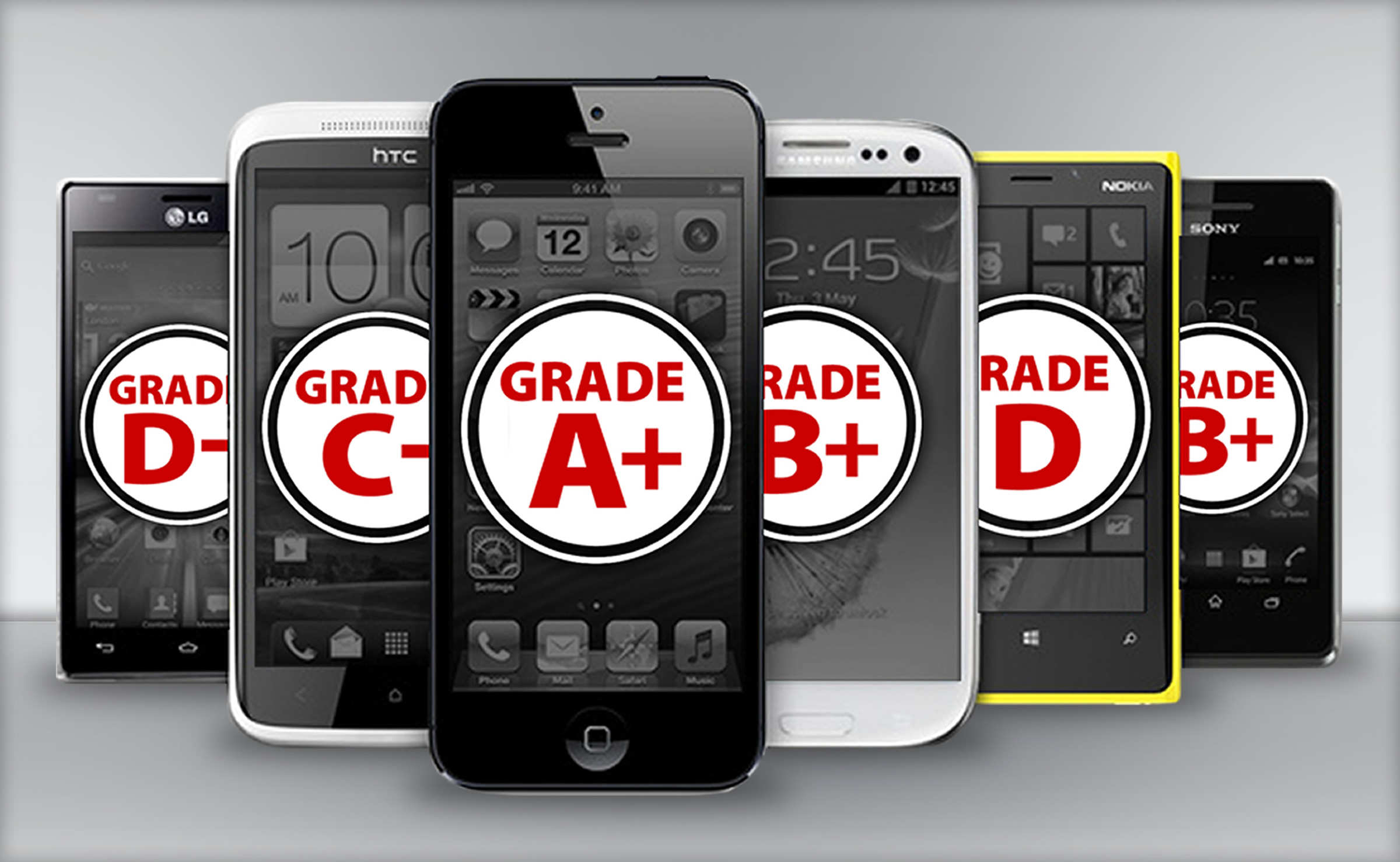 TAKEAWAY: As consumers frequently upgrade their phones, a thriving trade-in market has emerged, allowing individuals to exchange their used smartphones for newer models. For businesses engaged in the resale of pre-owned mobile phones, accurately grading the exterior cosmetic condition of these trade-in devices is not just a routine task but a critical factor in determining resale pricing and achieving greater profitability.
TAKEAWAY: As consumers frequently upgrade their phones, a thriving trade-in market has emerged, allowing individuals to exchange their used smartphones for newer models. For businesses engaged in the resale of pre-owned mobile phones, accurately grading the exterior cosmetic condition of these trade-in devices is not just a routine task but a critical factor in determining resale pricing and achieving greater profitability.
Importance of Accurate Grading:
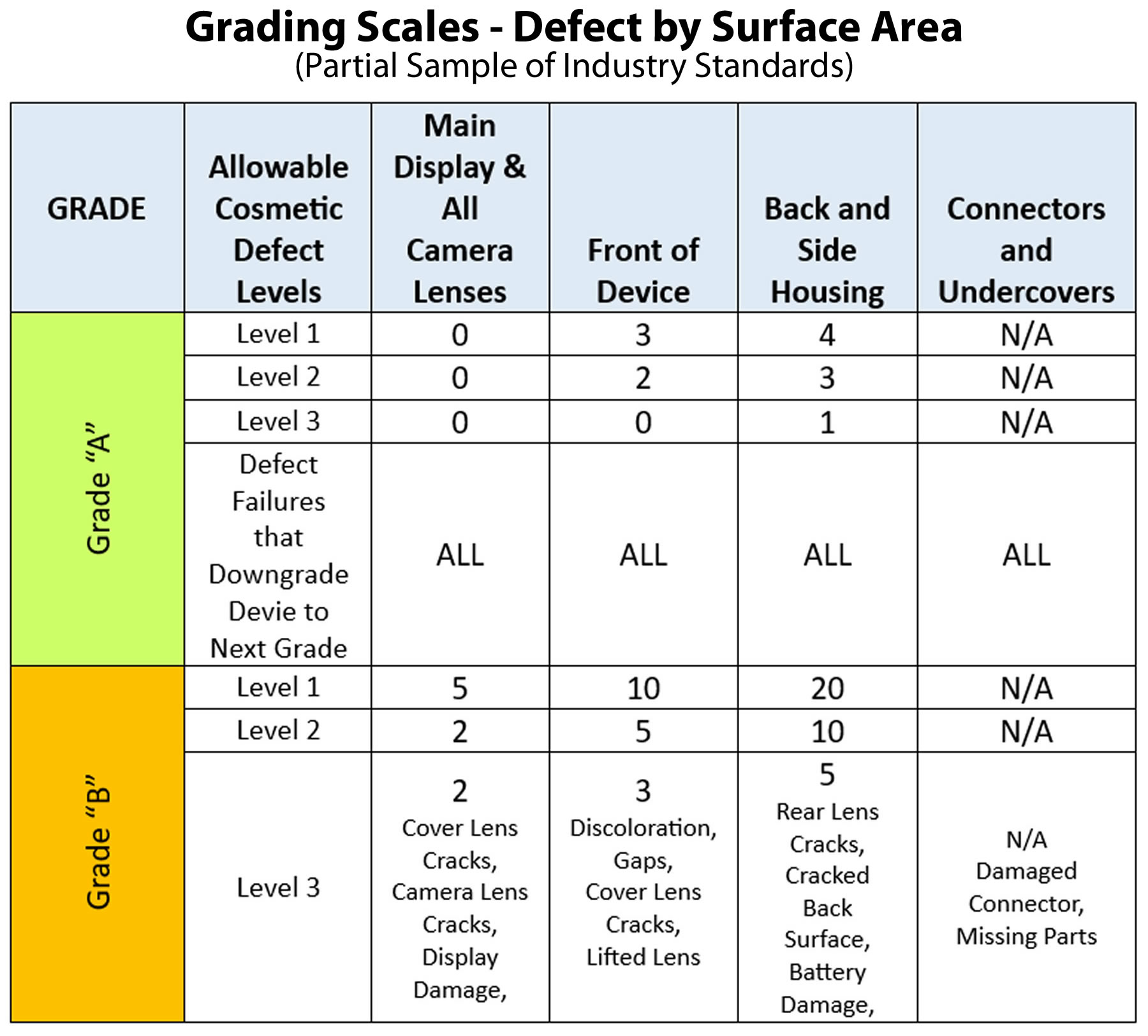 Accurate grading is a multi-faceted process that involves a thorough evaluation of a pre-owned mobile phone’s external condition. This includes assessing the display, body, buttons, camera lenses, and overall aesthetics. Grading a phone’s external cosmetic condition and setting the most profitable resale price is a critical step in the resale process, influencing customer perception, business reputation, and financial outcomes.
Accurate grading is a multi-faceted process that involves a thorough evaluation of a pre-owned mobile phone’s external condition. This includes assessing the display, body, buttons, camera lenses, and overall aesthetics. Grading a phone’s external cosmetic condition and setting the most profitable resale price is a critical step in the resale process, influencing customer perception, business reputation, and financial outcomes.
Accurate grading ensures that the resale price aligns with the device’s true value, creating a win-win situation for both the business and the customer. By prioritizing accuracy, businesses can establish themselves as trustworthy players in the pre-owned mobile phone market, attracting more customers and achieving greater profitability.
Resale prices for pre-owned phones can indeed vary widely depending on the assigned condition grade. Different grading scales and criteria used by various retailers or online platforms contribute to this variation.
Here below are some real-world examples illustrating how resale prices can differ based on the condition grade. The resale prices for the same models of iPhones and Samsung Galaxy phones can vary significantly based on the condition grade assigned to each device. The differences reflect the perceived value of the phones considering factors like cosmetic wear, scratches, and overall aesthetics:
| Excellent Condition (Grade A): iPhone X (64GB): $500 Samsung Galaxy S10: $450 | Fair Condition (Grade C): iPhone X (64GB): $300 Samsung Galaxy S10: $250 |
| Good Condition (Grade B): iPhone X (64GB): $400 Samsung Galaxy S10: $350 | Poor Condition (Grade D): iPhone X (64GB): $200 Samsung Galaxy S10: $150 |
Actual resale values can fluctuate based on market demand, the popularity of specific models, and the specific grading criteria used by each platform or retailer.
Furthermore, online marketplaces, trade-in programs, and physical retailers may have their own grading systems, leading to variations in resale prices. For instance:
1. An online marketplace might have a more competitive pricing structure to attract sellers and buyers, resulting in slightly higher resale values.
2. A retailer with a strict grading system and quality control measures may offer higher prices for phones in excellent condition, catering to customers who prioritize device aesthetics.
Ultimately, consumers looking to sell their pre-owned phones should be aware of the grading criteria used by the platform or retailer, as this significantly influences the offered resale price. Understanding the condition of the device and accurately grading it can help sellers make informed decisions and potentially maximize their returns.
A meticulous grading system for preowned mobile devices is essential for several reasons:
1. Fair and Transparent Pricing: Accurate grading ensures fair and transparent pricing for both sellers and buyers. By providing an objective evaluation of the phone’s cosmetic condition, businesses build trust with their customers. Transparent grading establishes a reputation for fairness, encouraging customers to return for future transactions.
2. Mitigating Business Risks: Accurate grading minimizes the risk of overestimating or underestimating the value of a pre-owned phone. Overestimating a phone’s condition can lead to financial losses for the business, while underestimating may result in missed profit opportunities. A precise grading system helps strike the right balance, minimizing financial risks associated with resale.
3. Enhancing Customer Satisfaction: Customers appreciate honesty and accuracy in the assessment of their device. When businesses accurately grade the exterior cosmetic condition of pre-owned phones, customers are more likely to be satisfied with their transaction, leading to positive reviews and word-of-mouth referrals. Satisfied customers are more likely to return and become loyal clients.
4. Differentiating in a Competitive Market: In a competitive market, businesses that prioritize accurate grading set themselves apart from the competition. Customers are more likely to choose a company that values transparency and precision, especially when it comes to assessing the condition of their valuable devices. Accurate grading becomes a selling point that can attract a larger customer base.
5. Optimizing Resale Profitability: The ultimate goal of any business involved in the resale of pre-owned mobile phones is to maximize profitability. Accurate grading plays a pivotal role in helping them to earn more money on each phone they resell by ensuring that each device is priced according to its actual condition. This results in a more efficient use of resources and a higher return on investment for the business.
Industry Standards Developed for Grading Pre-Owned Mobile Devices.
CTIA, the wireless industry association, announced back in 2018 a common industry-wide standard for evaluating pre-owned wireless devices. Established by CTIA’s Reverse Logistics and Service Quality (RLSQ) Working Group, whose members represent the entire reverse logistics community, the voluntary grading standard was the first of its kind to be introduced by companies representing the full wireless ecosystem, including device suppliers, wireless operators, insurance companies, logistics, parts suppliers and repair organizations.
The CTIA Certification Wireless Device Grading Scales Criteria and Definitions document defines the industry standard for grading aftermarket wireless devices. It allows buyers and sellers of devices to utilize a common grading definition throughout the industry, providing efficiencies throughout the ecosystem and establishing common terminologies.
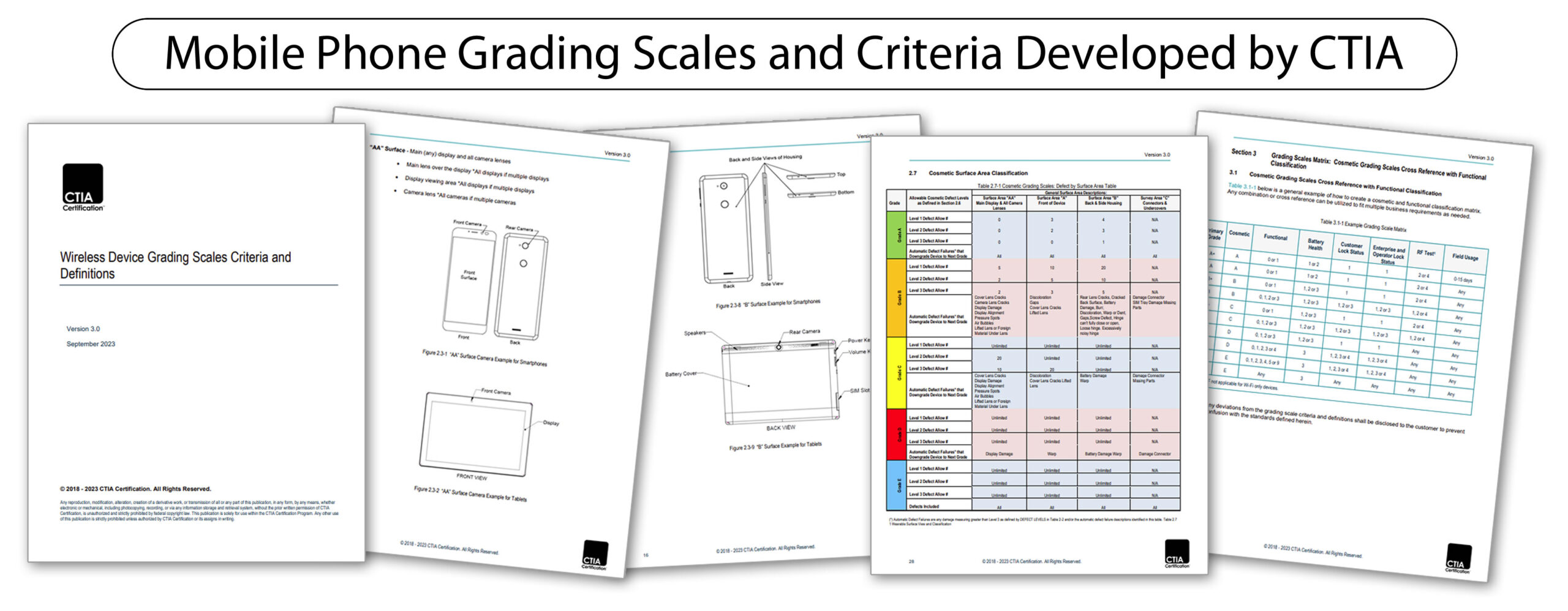
This collaboration by America’s wireless industry helped to make the grading of wireless devices more straightforward and consistent, creating uniformity in the pre-owned device marketplace to better meet the needs of consumers and the larger wireless industry. Companies involved in repairing, refurbishing or redistributing wireless devices and their parts can use the standard to grade the condition of preowned mobile devices, resulting in predictable device repair and building trust in the trade-in process for consumers and retailers alike. Establishing such an industry grading standard for devices benefits the entire industry with consistency and clarity.
Implementation of Accurate Grading:
To implement an effective grading system, businesses can invest in training their staff to recognize and evaluate different aspects of a phone’s exterior condition. Utilizing standardized grading scales, such as those commonly used in the industry, helps maintain consistency in assessments.
Moreover, leveraging advanced technologies, such as artificial intelligence and computer vision, can streamline the grading process and improve accuracy. These technologies can assist in identifying imperfections, scratches, and other cosmetic issues that may go unnoticed by the human eye.
Both human workers and robotic systems have their advantages and limitations when it comes to grading the cosmetic condition of phones for resale. The reliability of each method depends on various factors, and a combination of both approaches may offer the best results.
Let’s explore the strengths and weaknesses of each:
Human Workers – Advantages:
Subjective Assessment: Humans excel at subjective evaluation and can consider nuanced factors that may be challenging for a robotic system. They can identify subtle cosmetic imperfections and assess the overall aesthetic appeal of a device.
Adaptability: Human workers can adapt to changes or unique situations quickly. They can adjust their grading criteria based on the specific condition of each phone, accounting for variations that might not be programmed into a robotic system.
Complex Decision-Making: Humans can make complex decisions based on a combination of visual and contextual information. They can take into account factors beyond the external appearance, such as the phone’s history, usage patterns, and potential buyer preferences.
Human Workers – Limitations:
Subjectivity and Bias: Human assessments can be influenced by subjective opinions and biases. Different individuals may interpret cosmetic conditions differently, leading to inconsistencies in grading.
Fatigue and Repetition: Human workers may experience fatigue and reduced accuracy when grading a large volume of phones over an extended period. Repetitive tasks can lead to oversight and diminished attention to detail.
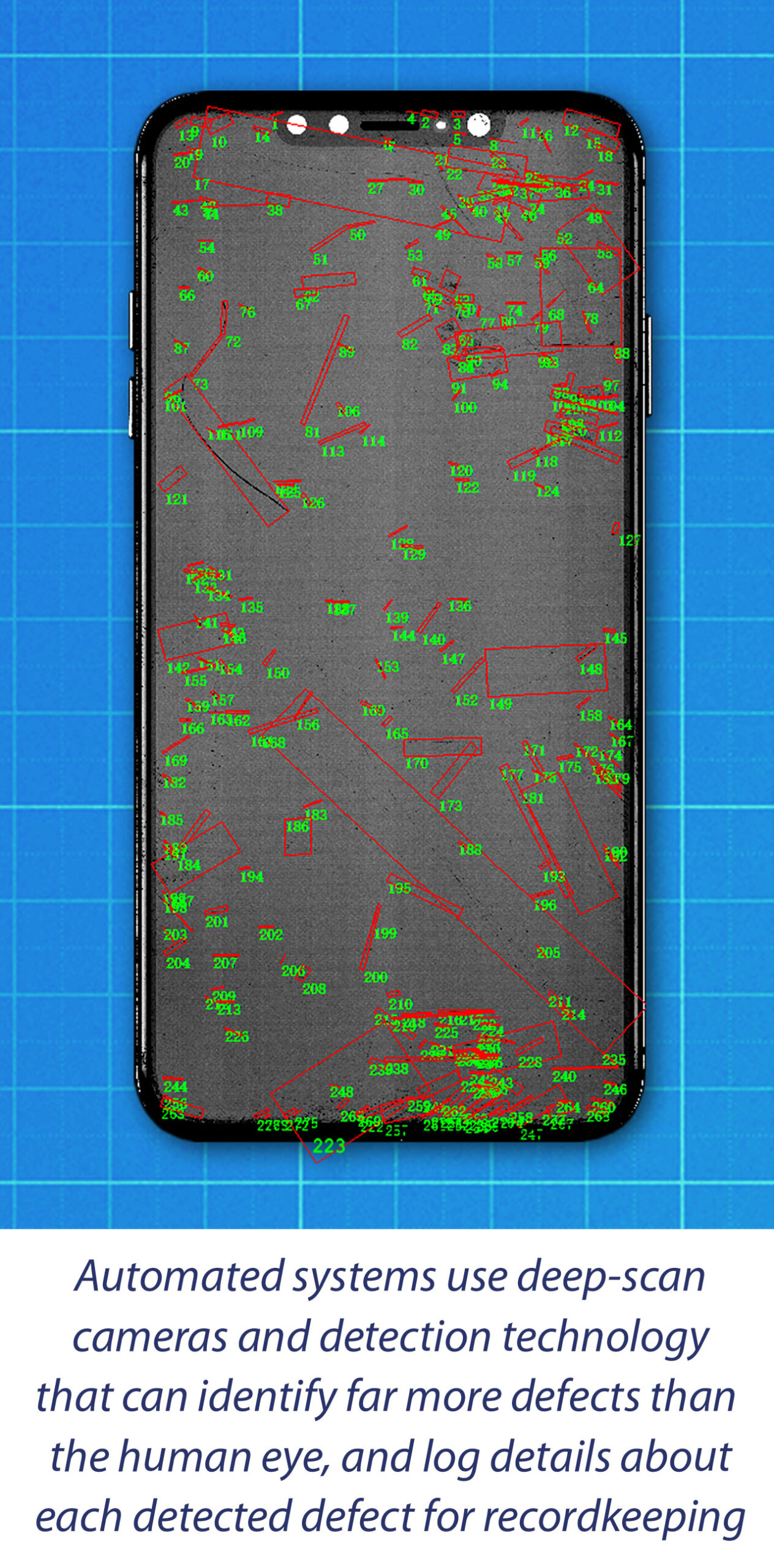 Robotic Systems – Advantages:
Robotic Systems – Advantages:
Consistency: Robotic systems provide consistent and standardized assessments. Once programmed, they apply grading criteria uniformly to each device, minimizing variations in evaluations.
Accuracy: Automated systems use sophisticated cameras and lighting to perform deep scans of devices to uncover cracks, scratches, nicks, abrasions and other surface defects with much higher accuracy and consistency than the human eye.
Efficiency: Automated systems can process a high volume of phones rapidly, leading to increased efficiency and reduced processing times. This speed is particularly advantageous in a large-scale operation.
Data-Driven Decisions: Robotic systems rely on data and predefined criteria, making their decisions objective, consistent and less prone to subjective biases. This objectivity can contribute to fair and transparent grading.
Robotic Systems – Limitations:
Limited Adaptability: Some robotic systems may struggle to adapt to unexpected variations or new types of cosmetic imperfections that were not part of their initial programming. They may lack the flexibility of human workers in responding to unique situations.
Inability to Consider Context: Automated systems may struggle to consider contextual information, such as the sentimental value a particular device may hold for its owner. They might miss factors that humans naturally incorporate into their assessments.
Hybrid Approach:
A combination of human expertise and robotic efficiency could be the most reliable solution. Human workers can handle nuanced and subjective aspects, while robotic systems can rapidly process a large number of devices, providing consistency and efficiency.
Ultimately, the reliability of the grading process depends on the precision of the grading criteria, the adaptability of the system, and the ability to minimize biases. A well-designed hybrid approach can leverage the strengths of both human workers and robotic systems to achieve accurate and efficient grading in the pre-owned mobile phone market.
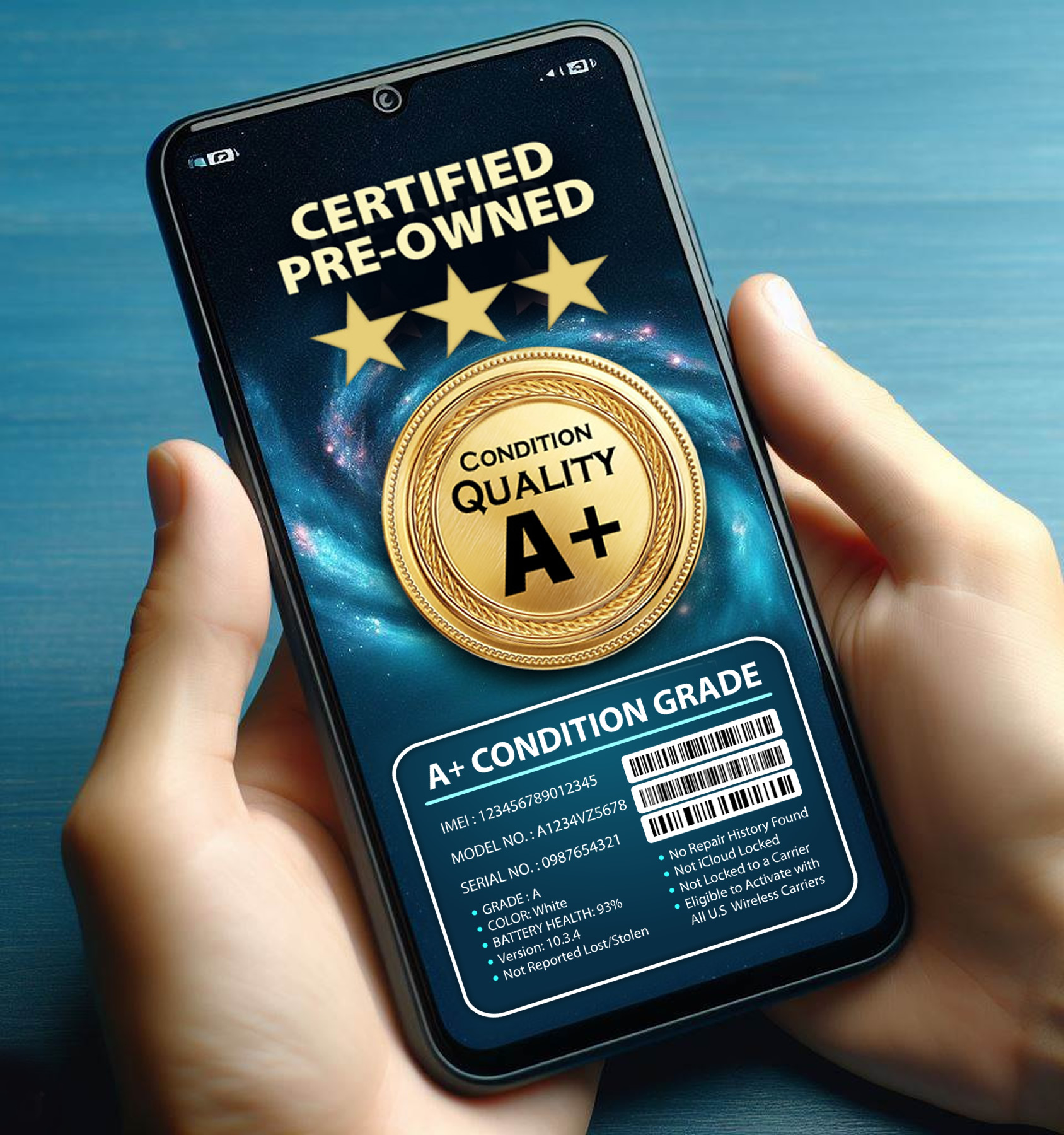 Conclusion:
Conclusion:
In the price and quality-conscious market for pre-owned mobile phones, accurate grading of exterior cosmetic condition is not just a routine task but a strategic imperative. Businesses that prioritize transparency, fairness, and precision in their grading processes stand to benefit from increased customer satisfaction, reduced business risks, and ultimately, greater profitability. By investing in accurate grading, companies can carve a niche for themselves in a competitive market, attracting more customers and solidifying their position as trustworthy players in the pre-owned mobile phone resale industry.
FutureDial’s Cutting-Edge Grading Automation: The Game-Changer for Accurate Mobile Device Grading for Profitable Resale Price Valuation
Leading wireless carriers, mobile phone refurbishers and resellers collaborate with FutureDial to integrate best-in-class grading automation solutions into their operations to determine accurate, repeatable grading and trustworthy resale pricing valuation. As a key solution provider in the industry, FutureDial participated in the development of CTIA’s Certification Wireless Device Grading Scales Criteria and Definitions, and FutureDial’s advanced software and robotics not only perform accurate grading and defect detection as per industry standards, but also instantly catalog any and all detected defects in granular detail for recordkeeping and to provide industry-grade transparency in pricing valuation and audit tracking.
Whether you’re a wireless carrier, wholesaler, refurbisher, mobile phone recycler, 3PL, trade-in provider, MNO or MVNO, reseller, or a direct-to-consumer mobile device reseller, FutureDial is poised to be your strategic partner for implementing mission-critical grading automation to help your business to make more money on each phone you resell. To unleash the full potential of our innovative solutions for your business, reach out to us today at sales@futuredial.com .
© 2024 FutureDial Incorporated. All Rights Reserved.
